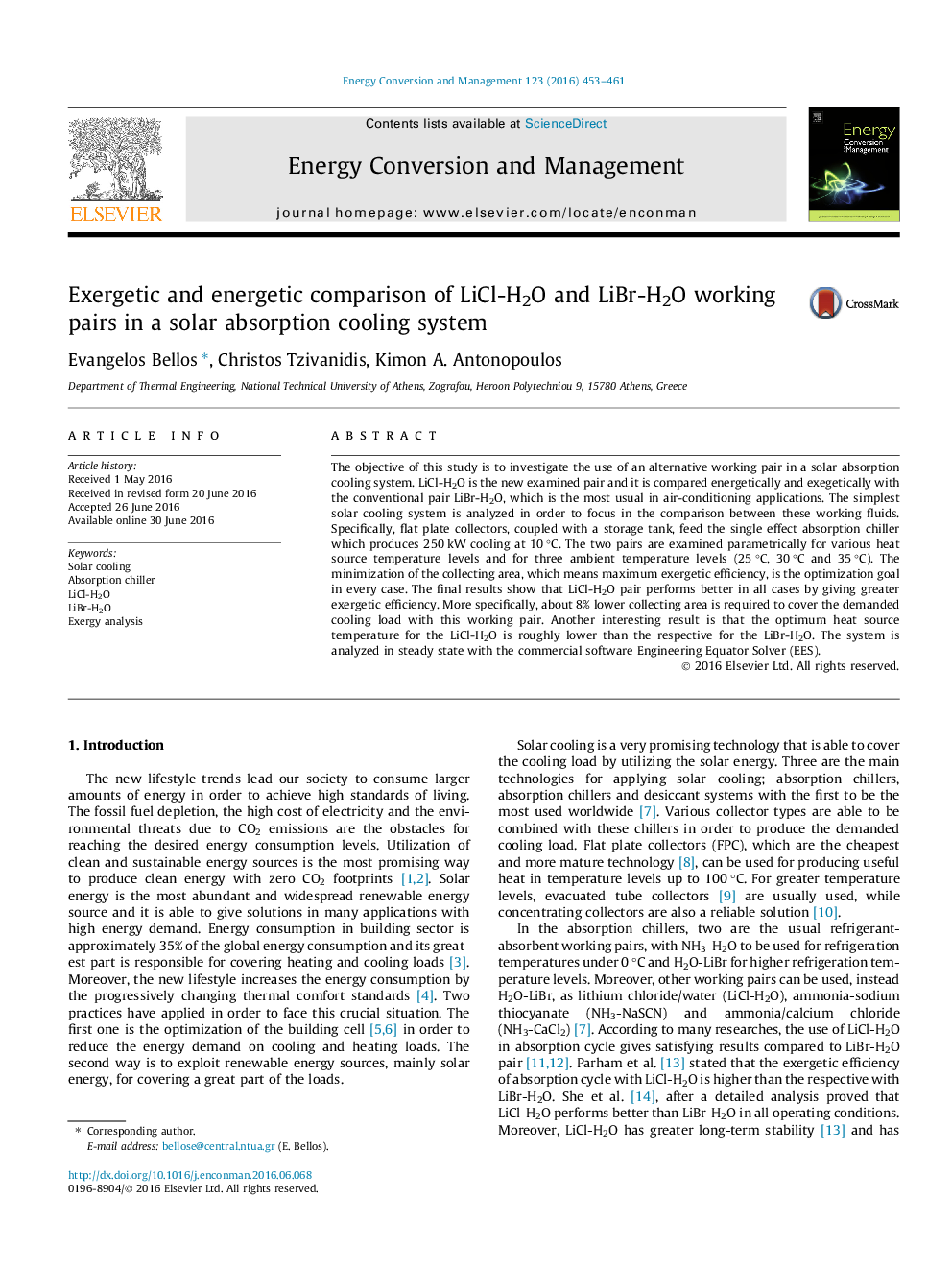| کد مقاله | کد نشریه | سال انتشار | مقاله انگلیسی | نسخه تمام متن |
|---|---|---|---|---|
| 760169 | 1462839 | 2016 | 9 صفحه PDF | دانلود رایگان |
• Two working pairs (LiCl-H2O and LiBr-H2O) are examined in a solar absorption chiller.
• The examined single effect absorption chiller is driven by flat plate collectors.
• The system is analyzed energetically and energetically for 3 ambient temperatures.
• LiCl-H2O performs better than LiBr-H2O in all the examined cases.
• The optimum operating temperature is lower for the case of pair LiCl-H2O.
The objective of this study is to investigate the use of an alternative working pair in a solar absorption cooling system. LiCl-H2O is the new examined pair and it is compared energetically and exegetically with the conventional pair LiBr-H2O, which is the most usual in air-conditioning applications. The simplest solar cooling system is analyzed in order to focus in the comparison between these working fluids. Specifically, flat plate collectors, coupled with a storage tank, feed the single effect absorption chiller which produces 250 kW cooling at 10 °C. The two pairs are examined parametrically for various heat source temperature levels and for three ambient temperature levels (25 °C, 30 °C and 35 °C). The minimization of the collecting area, which means maximum exergetic efficiency, is the optimization goal in every case. The final results show that LiCl-H2O pair performs better in all cases by giving greater exergetic efficiency. More specifically, about 8% lower collecting area is required to cover the demanded cooling load with this working pair. Another interesting result is that the optimum heat source temperature for the LiCl-H2O is roughly lower than the respective for the LiBr-H2O. The system is analyzed in steady state with the commercial software Engineering Equator Solver (EES).
Figure optionsDownload as PowerPoint slide
Journal: Energy Conversion and Management - Volume 123, 1 September 2016, Pages 453–461
